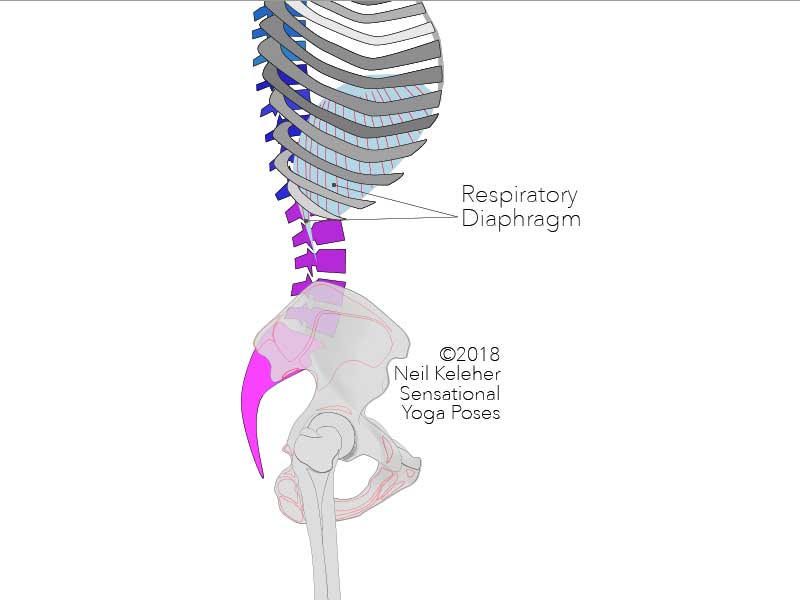Anchoring your diaphragm
Anchoring the respiratory diaphragm for more comfortable breathing.
Recently I found I had trouble breathing in a relaxed manner while doing a standing meditation. I found that I felt tense. I was trying to breath naturally, using my respiratory diaphragm and transverse abdominus but I felt tense.
One of my first instincts any time I have problems with the body is to create stability.
How do you create stability for the diaphragm? How do you anchor your diaphragm to give it a firm foundation from which to act?
Points of attachment of the respiratory diaphragm
The diaphragm attaches to the inner surface of the lower ribs. Its a parachute or umbrella shaped muscle that attaches to the bottom of the lungs and heart. The liver, stomach and other abdominal organs are all suspended from its underside.
It also has attachments to either side of the lumbar spine.
It's asymmetrically shaped because of the position of the heart and the difference in size between the left and right lung, and part of the asymmetry may be to give both sides of the diaphragm a similiar feel.
What happens when the diaphragm contracts?
When the diaphragm contracts, it pulls inwards. Since its dome is higher than its edges, the dome will try to move downwards and this is what causes the belly to expand in one form of diaphragmatic breathing.
The 12th or bottom most pair of ribs are the shortest pair of ribs and are called floating ribs since their ends do not directly attach to the sternum.
The diaphragm attaches to these ribs and as such, when it contracts it creates an upward pull on these ribs.
Why create a downwards pull on the lower back ribs when doing diaphragmatic breathing
To help anchor your diaphragm and give it a stable foundation from which to act it can help to create a downward pull on these ribs first. And that may be one way to get back to calm and relaxed breathing. Work at pulling down on the back of the bottom of the ribcage.
That action alone may be enough to calm your breathing down.
Creating a downwards pull on the bottom rim of the ribcage
Note that the oblique muscles, along with the quadratus lumborum, help to anchor the entire bottom rim of the ribcage. And so another possibility for anchoring respiratory diaphragm is to create a downward pull on the bottom rim of the ribcage.
The goal isn't to pull the ribcage down towards the pelvis, but instead to create a downwards pull. This can cause the obliques to activate. While using the diaphragm to breath, the activation may change to account for changes in tension and pressure but you'll be giving the diaphragm an anchor for contraction.
Sometimes what can happen if muscle or set of muscles don't have the necessary stability (a fixed bone) from which to act, the body tries to create stability as best as it can. The result is a feeling of tension and/or poor functioning and or pain.
The answer is to try to give the body the stability it needs where it needs it.
Published: 2020 04 18
Updated: 2020 08 28



